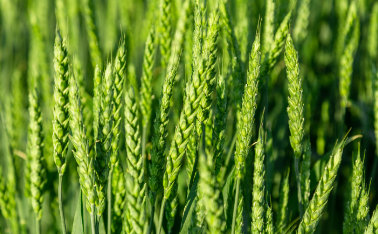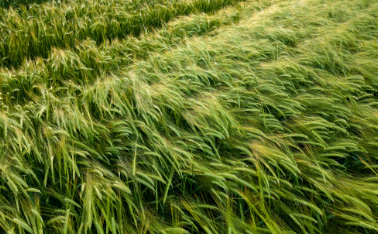Nitrogen fertilization of cereals – correct feeding dates
All fertilization guides say that mineral nitrogen fertilizers should be applied before the period of the greatest demand for nutrients of the crop. The fertilizer dose should be determined in accordance with the fertilization demand of the plantation. This demand is a component of many variables, including the type of forecrop, soil properties, weather conditions or the level of natural fertilization. The dates of application of nitrogen fertilization in the cultivation of cereals can be presented in the form of a fertilization calendar for individual cereal crops.
Fertilization calendar
- Spring wheat: 60% of the dose before sowing and 40% of the dose in the stem shooting phase. The total nitrogen dose for spring wheat should not exceed 60 kg per hectare. Large doses of nitrogen can be divided into three to four parts.
- Winter wheat: 40 to 50% at the beginning of the vegetation process, and another 30 to 40% during the shooting phase. The next part of nitrogen fertilizer should be applied before the heading period.
- Winter triticale: as in the case of winter wheat – 50 – 60% in spring at the beginning of vegetation, and the next dose in the shooting phase.
- Spring barley: in the case of barley, fertilize 60% of the dose before sowing, and 40% in the tillering phase; malting barley should be fertilized only before sowing.
- Winter barley: 50 to 60% of the dose at the beginning of the growing season, and the next dose during the shooting phase.
- Rye: 50 to 60% of the dose at the beginning of the growing season, and subsequent amounts during the shooting phase.
- Oats: 50 to 60% of the dose before sowing. Another dose in the shooting phase.
- Maize: before sowing from 30 to 50% of the dose, while the remaining part for top dressing before the plant reaches 30 – 40 cm height.
Dates for fertilizing cereals
During the emergence of cereals, fertilization guides say that the key is to provide the plants with the right amount of phosphorus and potassium. The proper development of plants will also require such micronutrients as: copper, manganese and iron, and a minimum amount of boron, zinc and molybdenum. They should be entered in the fertilization calendar. Usually, during the emergence period, the necessary micro and macro elements should be used.
During the tillering period, the amount to 2 kg of DR GREEN CEREALS fertilizer containing a significant dose of copper, manganese and iron, as well as DR GREEN START which contains 600 g phosphorus, should be increased in order to ensure proper tillering of the cereals.
During the shooting period, cereals should be supplemented with a DR GREEN ENERGY fertilizer that contains a significant dose of potassium and a small amount of nitrogen in combination with a smaller dose of micronutrient fertilizer to 1 kg/ha DR GREEN CEREALS.
Micronutrient deficiency – which ingredients are most often missing in crops?
All fertilization guides indicate that grain crops suffer from deficiencies of such micronutrients as copper, manganese, zync and iron. Copper contained in foliar fertilizers significantly reduces the susceptibility of the cereal to lodging, improves the number of grains in the ear and increases the regeneration of plant tissues that have been damaged during frost. In addition, this element immunizes the root system of the plant against all kinds of diseases. Copper deficiency can cause bleaching and drying of the ears and ends of the leaves, and also leads to a reduction in the quality and quantity of the crop. Manganese increases the photosynthesis process, improves the plant’s frost resistance and makes the stem base resistant to diseases. Manganese deficiency inhibits plant development, can cause gray spot in cereals and necrosis and mottled chlorosis on cereal stems and leaves. The right dose of iron regulates the photosynthesis process of chlorophyll, lignin and carotene, influencing the production of an appropriate number of ribosomes. As a result, this element significantly participates in the synthesis of proteins. Zinc improves resistance to spring frosts.
What if fertilization is carried out on incorrect dates?
The correct sowing of fertilizers and the optimal distribution of their doses is crucial for the quality and size of the crop. Too early or too late fertilization (not only with nitrogen) increases the plant’s susceptibility to diseases, reduces plantation efficiency, lowers the yielding potential, and generally fails to provide the cultivated plant with proper growth conditions. Therefore, a detailed schedule of fertilization with both nitrogen and micro and macronutrients should be planned.
Summary
Failure to observe the fertilization schedule recommended by fertilization guides carries environmental effects. High doses of nitrogen and other nutrients present in fertilizers – especially before the period of the highest demand of the plant – can cause eutrophication. It is caused by the accumulation of nutrients in the water, which allows nitrates to enter the drinking water. Nitrates (V), which enter the human body, are broken down into nitrates (III), which impair hemoglobin, making it unable to transport oxygen. Therefore, a farmer who cares about the environment and his workshop (farmland) should follow the fertilization schedule recommended by fertilization guides.














